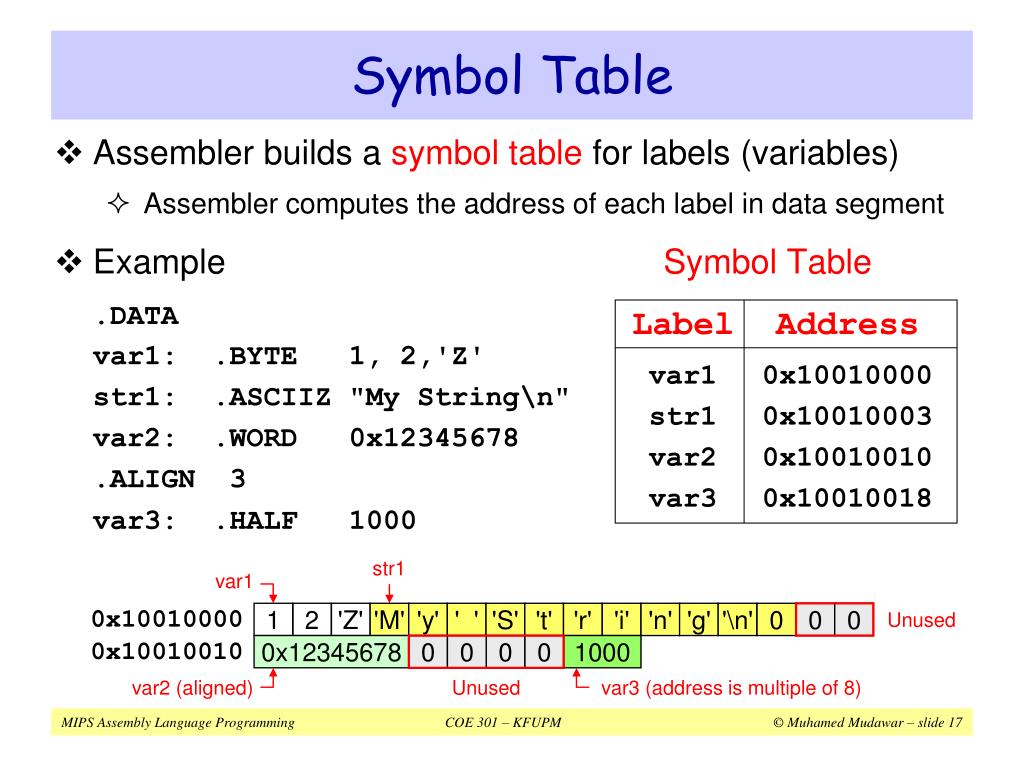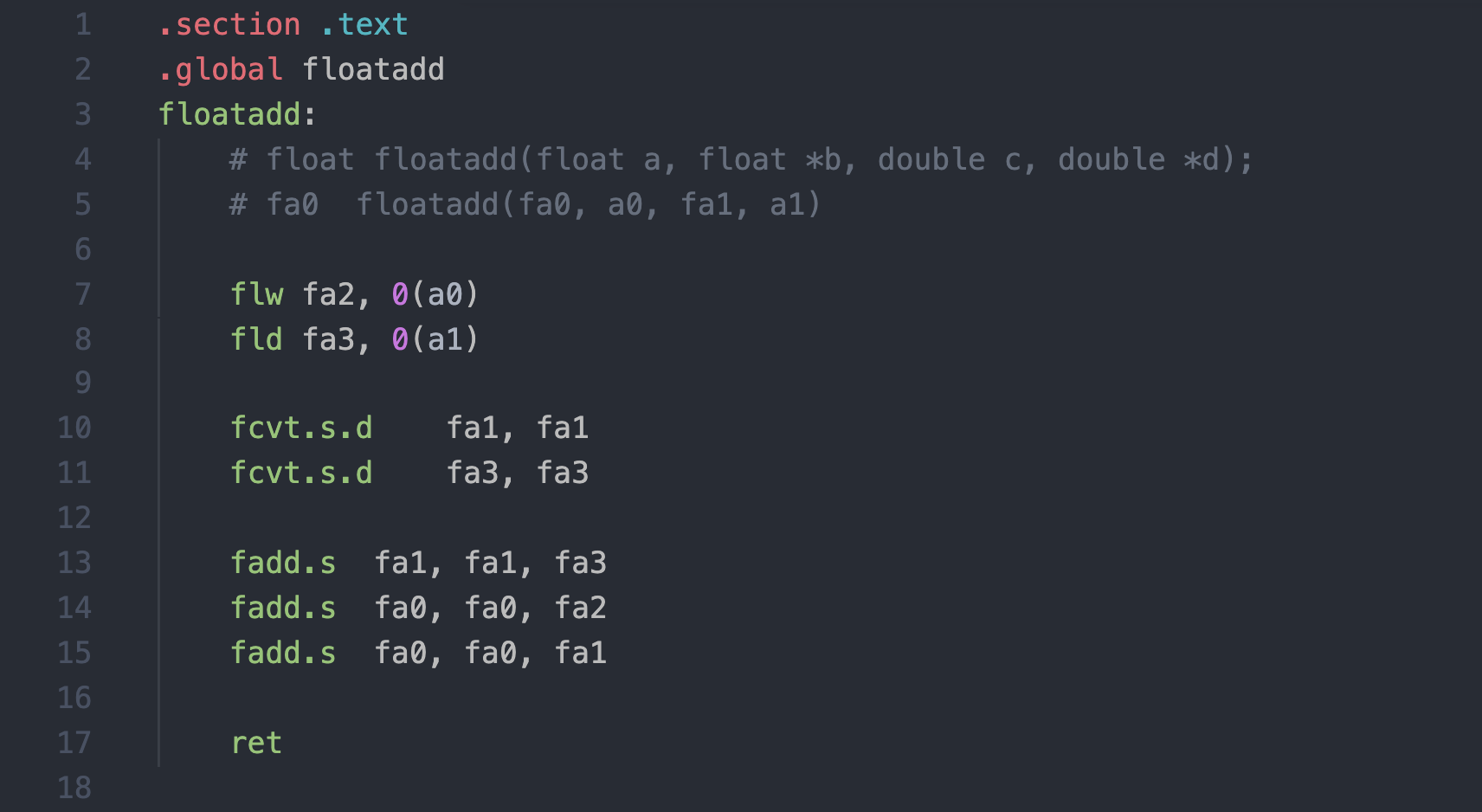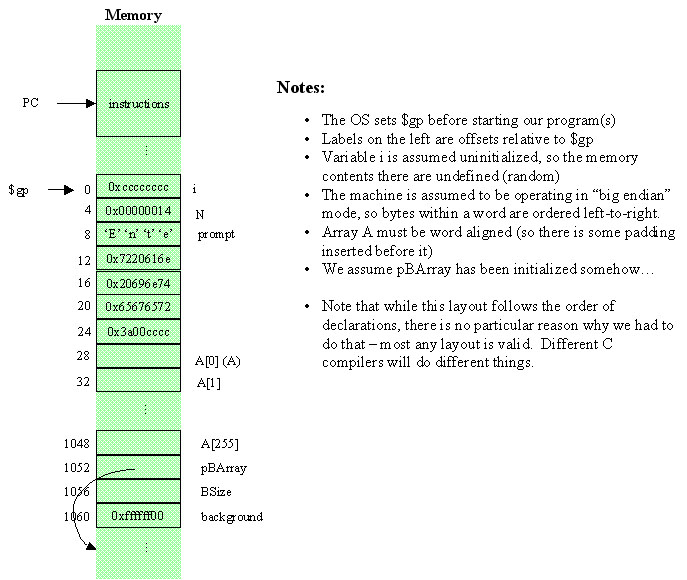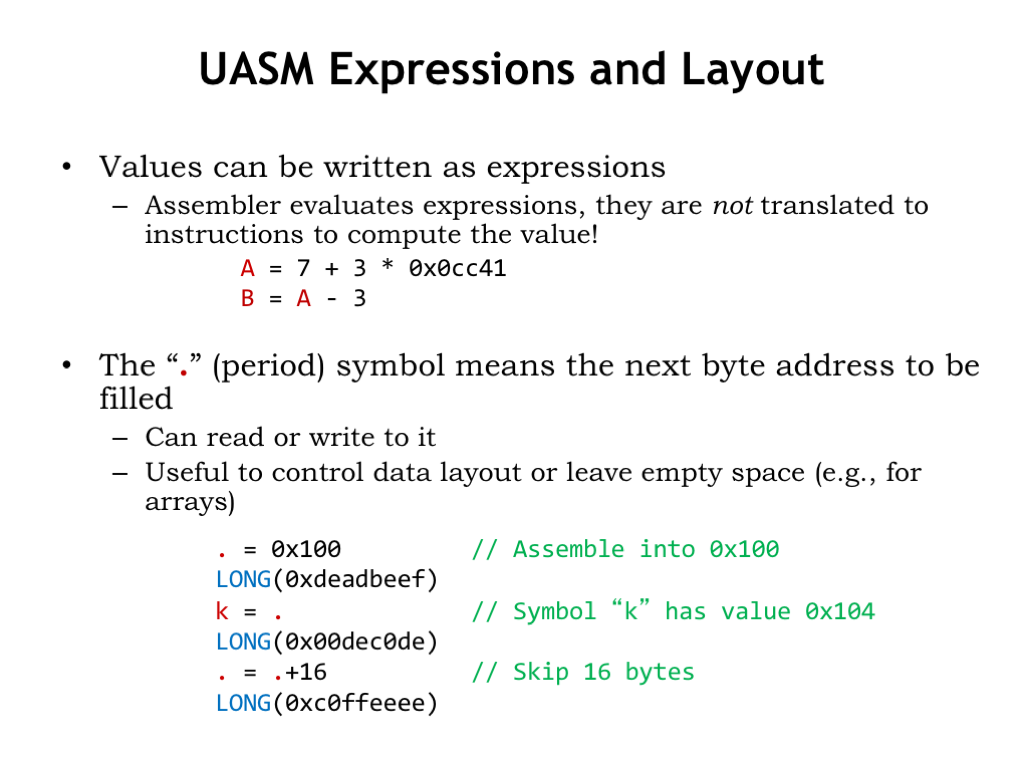41 labels in assembly language examples
PDF Assembly Language Programming - UTEP - Labels must begin in column 1. - A label can optionally be followed by a colon , - The value of a label is the current value of the Location Counter (address within program) , - A label on a line by itself is a valid statement , - Labels used locally within a file must be unique. Adapted from notes from BYU ECE124 , 5 , labels in assembly language examples - tour-aviation.ch NASM and MASM Examples of … The names used for labels in assembly language programming consist of alphabetic letters in both uppercase and lowercase, number 0 through 9, and special characters such as question mark (? In addition to supporting referring to memory regions by labels (i.e. Otherwise, apples == oranges, the branch is not taken ...
Learning Assembly Language | Codementor Typically examples are telling the assembler that the following instructions are code (usually via a .text directive) vs. data (usually via a .data directive). Like regular instructions, these instructions are typically written on their own line, however, the inform the assembler rather than generate machine code instructions directly.

Labels in assembly language examples
'Label' in assembly language - opcode - Stack Overflow The assembler translates labels into addresses when you reference them from other places. TOP: ADD B will be translated simply to 80, just as if the label wasn't there. The label address is the address where the 80 goes, the current position in the output for that line. 2 Assembly Language Programming - University of New Mexico In an assembly language program, a label is simply a name for an address. For example, given the declarations shown in Example 2.1, ``x'' is a name for the address of a memory location that was initialized to 23. On the SPARC an address is a 32-bit value. As such, labels are 32-bit values when they are used in assembly language programs. Assembly language - CodeDocs For example, where Intel uses the mnemonics MOV, MVI, LDA, STA, LXI, LDAX, STAX, LHLD, and SHLD for various data transfer instructions, the Z80 assembly language uses the mnemonic LD for all of them. A similar case is the NEC V20 and V30 CPUs, enhanced copies of the Intel 8086 and 8088, respectively.
Labels in assembly language examples. 8051 - "Label" in Assembly language - Stack Overflow In 1st example, starting from above: 1) A gets zero, then, 2) R2 gets 10, then, 3) A gets 25, then, 4) DJNZ decrements the value of R2 making it 9 and since the result is non zero, executes AGAIN and it adds 25 in A making it 50 and so on. When the value of R2 reaches 1, DJNZ decrements it and the result is zero so it won't execute AGAIN. Assembly Language Syntax by Valvano - Pennsylvania State University line has a label. Symbol characters are the upper or lower case, letters a- z, digits 0-9, and the special characters, period (.), dollar sign ($), and underscore (_). Symbols consist of one to, 15 characters, the first of which must be alphabetic or the special, characters period (.) or underscore (_). All characters are significant, What Is Assembly Language? (With Components and Example) In this example of an assembly language, "1:" is the label which lets the computer know where to begin the operation. The "MOV" is the mnemonic command to move the number "3" into a part of the computer processor, which can function as a variable. "EAX," "EBX" and "ECX" are the variables. The first line of code loads "3" into the register "eax." How Are Labels Named In Assembly Language? - Quora Labels can be from 1 to 31 characters long and may consist of letters, digits, and the special characters ? . @ _ $ %, If a period is used, it must be the first character, Labels must not begin with a digit, The assembler is case insensitive, Legal and Illegal Labels, Examples of legal names, COUNTER1, @character, SUM_OF_DIGITS, $1000, DONE? .TEST,
Fundamentals of MIPS Programming in Assembly Language Labels work as with in other versions of assembly language. Declaring User Data (Variables) Variables are values used by a running program that can be changed at any time. In MIPS assembly language, allocating space for variables must be done in the .data segment, and generally requires you to specify the data type to be used. Local Labels - Elements of Assembly Language - 123dok Chapter 2 Elements of Assembly Language. 2.4. Local Labels. 2.5. Scope of Labels. o The characters underline (_), period ( . ), and dollar sign ( $). The first character of an identifier must not be numeric. Other than that restric-tion, there are a few other points to note: o All characters of an identifier are significant and are checked in ... Labels (x86 Assembly Language Reference Manual) - Oracle Labels. A label can be placed at the beginning of a statement. During assembly, the label is assigned the current value of the active location counter and serves as an instruction operand. There are two types of lables: symbolic and numeric. Symbolic Labels. A symbolic label consists of an identifier (or symbol) followed by a colon (:) (ASCII ... Embedded Systems - Assembly Language - tutorialspoint.com The names used for labels in assembly language programming consist of alphabetic letters in both uppercase and lowercase, number 0 through 9, and special characters such as question mark (?), period (.), at the rate @, underscore (_), and dollar ($). The first character should be in alphabetical character; it cannot be a number.
PDF Assembly Language - University of Texas at Austin and C3PO are all examples of possible LC-3bassembly language labels. There are two reasons for explicitly referring to a memory location. 1. The location contains the target of a branch instruction (for example, AGAIN in line 0E). 2. The location contains a value that is loaded or stored (for example, NUMBER, line 14, and SIX, line 15). LC3 Assembly Language.ipynb - Bryn Mawr College The assembler first goes through the source code collecting labels, and their locations. During the second pass, it can substitute the used label in the operands with the label location minus instruction location - 1. .ORIG x4000 x4000 LD R1, SIX x4001 HALT x4002 SIX: .FILL #23 .END. So, the PC-offset for SIX is x4002 - x4000 - 1 = 1. SECTION V-10: Rules for Labels in Assembly Language The names used for labels in assembly language programming consist of alphabetic letters in both upper and lower case, the digits 0 through 9, and the special characters question mark (?), period (.), at (@), underline (_), and a dollar sign ($). The first character of the label must be an alphabetic character. Guide to x86 Assembly - Yale University This guide describes the basics of 32-bit x86 assembly language programming, covering a small but useful subset of the available instructions and assembler directives. ... In the examples above, where we used labels to refer to memory regions, these labels are actually replaced by the assembler with 32-bit quantities that specify addresses in ...
EOF
Assembly language - CodeDocs For example, where Intel uses the mnemonics MOV, MVI, LDA, STA, LXI, LDAX, STAX, LHLD, and SHLD for various data transfer instructions, the Z80 assembly language uses the mnemonic LD for all of them. A similar case is the NEC V20 and V30 CPUs, enhanced copies of the Intel 8086 and 8088, respectively.
2 Assembly Language Programming - University of New Mexico In an assembly language program, a label is simply a name for an address. For example, given the declarations shown in Example 2.1, ``x'' is a name for the address of a memory location that was initialized to 23. On the SPARC an address is a 32-bit value. As such, labels are 32-bit values when they are used in assembly language programs.
'Label' in assembly language - opcode - Stack Overflow The assembler translates labels into addresses when you reference them from other places. TOP: ADD B will be translated simply to 80, just as if the label wasn't there. The label address is the address where the 80 goes, the current position in the output for that line.


































Post a Comment for "41 labels in assembly language examples"